The 10 Most Inventive Screenplays of 2017
Instead of debating which is the "best" screenplay of the year, here are some of the most creative.
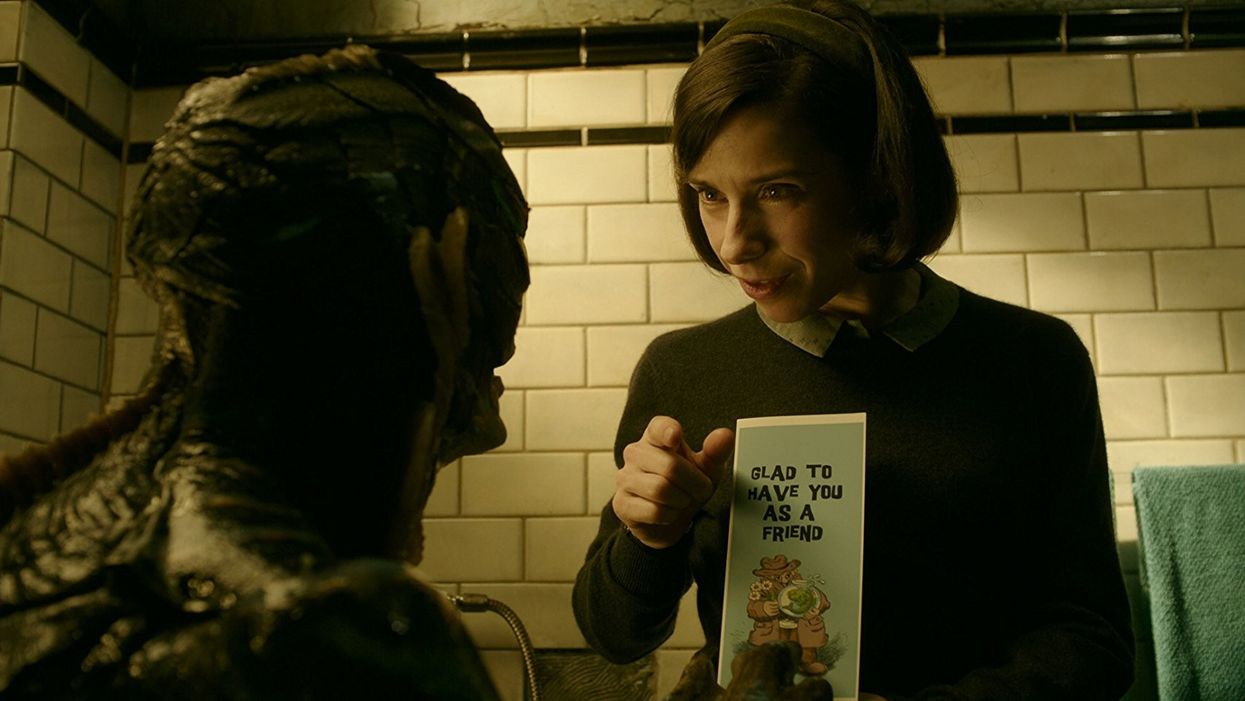
Declaring one screenplay over another to be the best of the year is not only subjective, it's impossible. We can't even come to a consensus, which is exactly the point when debating movies, books, and art. You can have a strong opinion, and maybe you can find several other people to agree with your opinion, but you can never be right. So let's not argue over which screenplay was the best of the year. Instead, let's admire those screenplays that were among the most creative of the year.
With that in mind, these are 10 of the most inventive screenplays of 2017 in my humble opinion, in no particular order (don't let the numbers fool you).
Full disclosure: this list is severely limited by the volume of films I was able to watch this year, which as always was not nearly enough.
1. A Ghost Story— A wholly unexpected, emotionally haunting tale comes to life
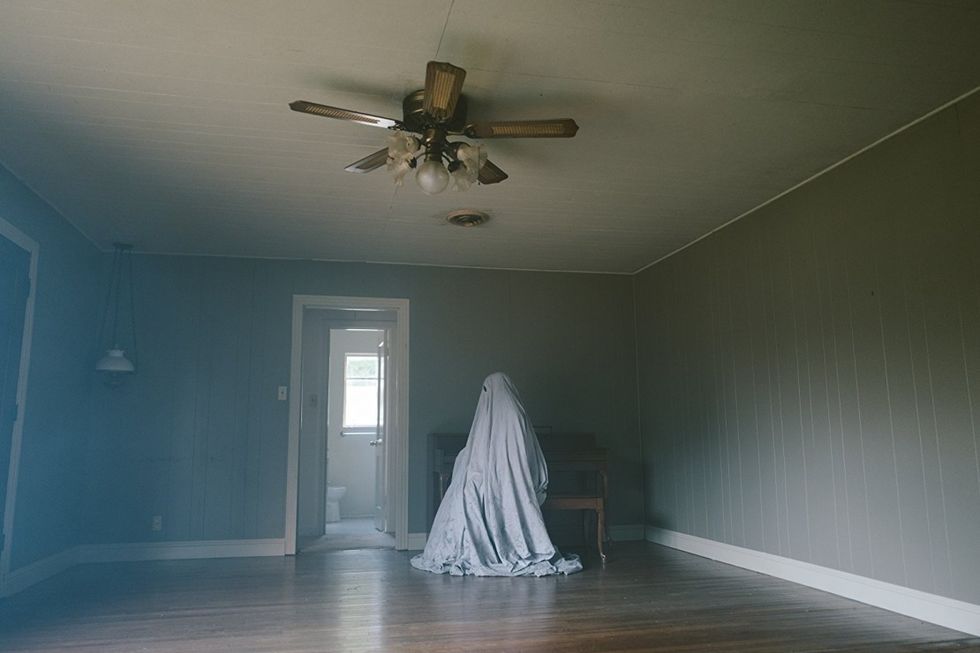
Trying to convince people to watch A Ghost Storyby summarizing the film for them is a fool's errand. The husband of a young married couple dies suddenly, then returns to their house as a ghost, appearing just the way you imagined ghosts looked when you were four-years-old—a body hidden under a white bed sheet with two black holes for eyes. The sheer premise of this film should not work.
And yet A Ghost Story has haunted me ever since I saw the film earlier this year. David Lowery's film is sparse, pushing his own penchant to focus on the small moments in between the major events of a story to the extreme. The film is also gut-wrenching. Just say, "The pie scene" to anyone who has seen A Ghost Story and watch them groan like you just punched them in the stomach. Lowery's film requires patience and a willingness to go along with this simple yet absurd concept, taking the audience to the most unexpected places, all while staying in the exact same place. Those who choose to take this journey will find themselves haunted by this film, too—in the best way possible.
2. Lady Bird— The pain of being a teenager, and raising one, in all its glory
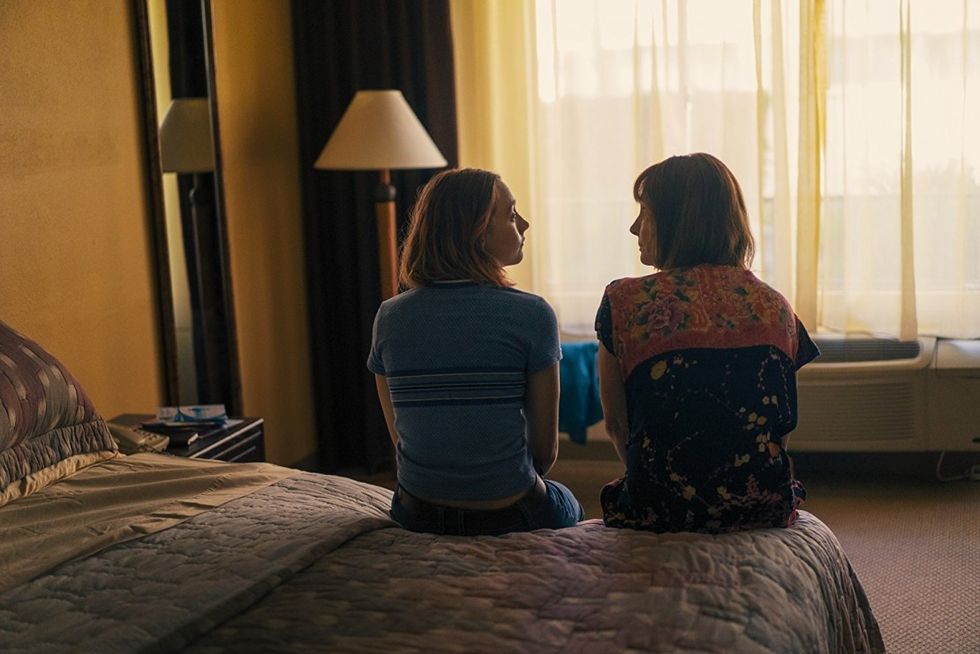
On the surface, Lady Bird may seem like only a coming-of-age story about a headstrong teenager rebelling against her mother during her senior year, itching to escape her Catholic school, her social status and her hometown of Sacramento. Look harder, though, and you'll find a love story, not between Christine "Lady Bird" McPherson and the boys she pursues, but instead between Lady Bird and her mother. This love hurts, emotionally and physically. Words wound. And somehow, we're laughing while we're crying. We're also feeling a terrible urge to talk to our parents or our children (or both) about the pain we've caused them, sometimes intentionally, many times not.
Greta Gerwig's writing and directing is confident, just like her story's protagonist. Both Gerwig and Lady Bird know what they want and how this story should unfold. Nothing about their choices feels false. When the film ended, the woman next to me, who had been sobbing through the entire third act, turned to her friend and asked, "Was this a true story?" Lady Bird may or may not be autobiographical, but the story is most certainly true.
3. Get Out — Just when you thought we were living in a post-racial world
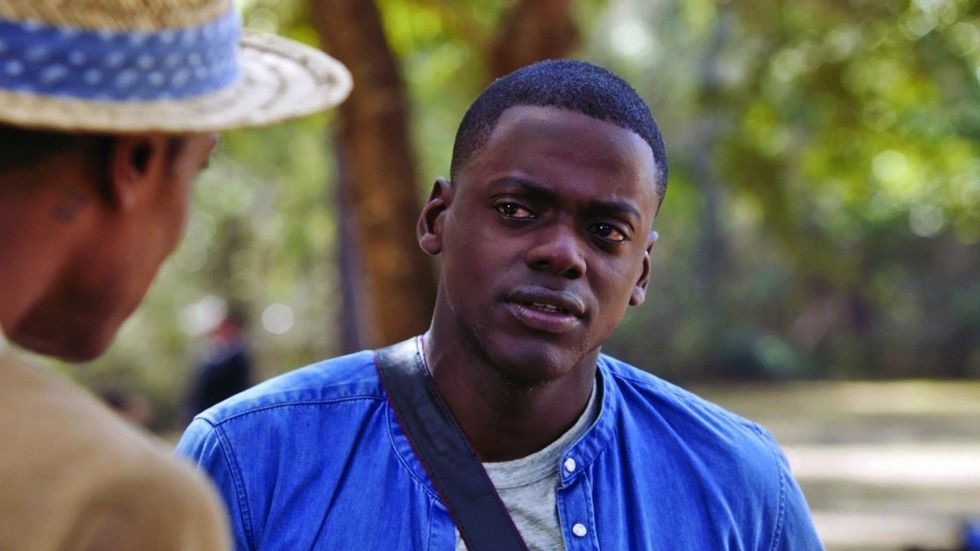
Of course, like all great horror films, Get Out transcends the genre with its social commentary on claims that our country had entered the post-racial era with the election of Obama, when people of color knew all too well that anyone who believed that notion was either blind, unwilling to look harder, out of touch with reality, or a combination of all three. Peele wrote and directed this film before the election of Trump, which makes his script all the more prescient.
Peele also intended for the film to have a much darker ending. During the testing of the film, he realized audiences needed a hero and they needed a release. Peele discovered that the ending of the final film created the expectations in the audience that his original ending portended while satisfying the audience's desires, too. Get Out reminds us that the best message movies are the movies that feel like pure entertainment, then lead to discussions and debates long after we have left the theatre.
4. Colossal — Discovering the monster inside all of us
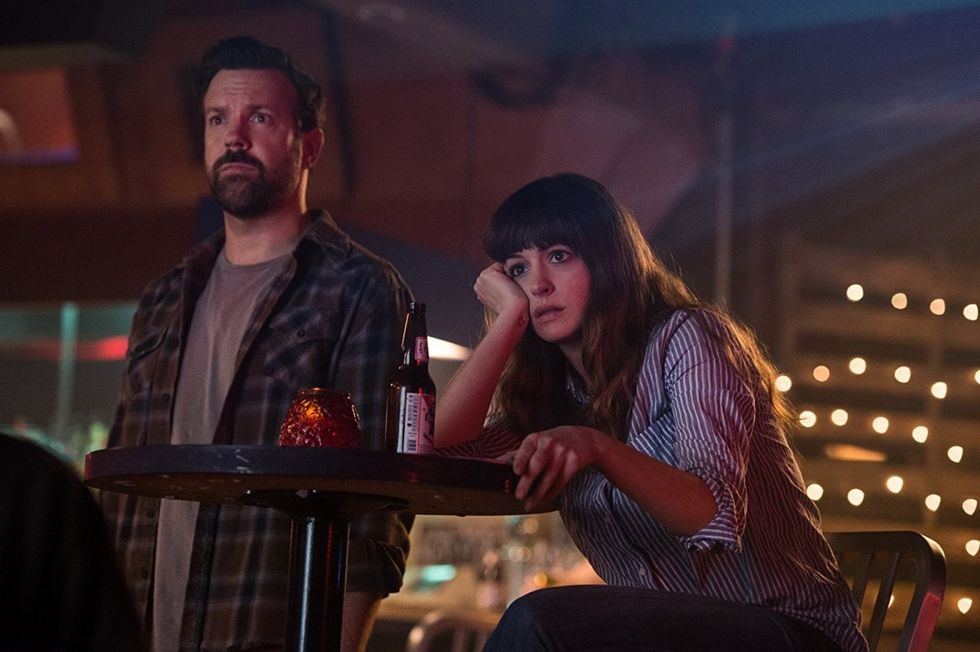
When Colossal begins, you might be a little confused. The cold open of the film may lead you to believe that you've stumbled into a South Korean monster movie. The next scenes will make you think you're watching an indie comedy about a young, broke party girl, forced to move back home when her boyfriend kicks her out of his apartment. If your brain hasn't exploded from trying to keep these two disparate story threads tied together, Colossal will reward you with one of the most original concepts in recent years.
Like the story's protagonist, writer/director Nacho Vigalondo's film makes some missteps in the second half of the second act, but the audacity of the film's premise combined with the empowering and creative ending more than make up for the unevenness in my opinion. I always give extra credit for originality, even if it creates a few bumps in the road along the ride.
5. Brigsby Bear — Becoming the star of your own life
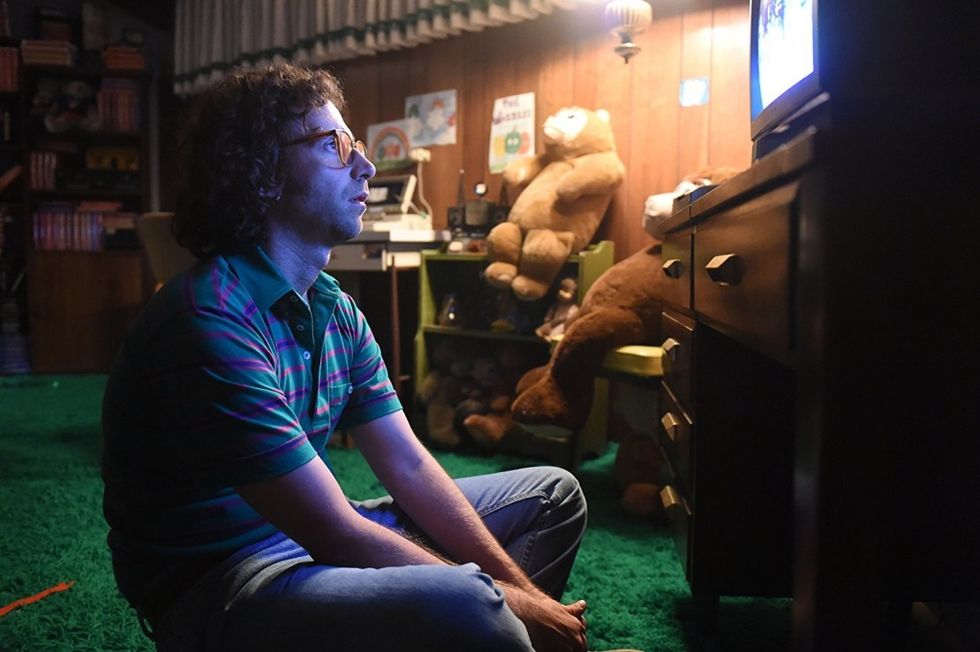
What if someone made a television show just for you? Literally, just you. Now ask yourself, why would somebody do this? Brigsby Bear examines this very question with a big-hearted, sweet story that, when you step back and consider the circumstances, really ought not to be sweet nor big-hearted. Such is the magic of this film, written by Kevin Costello and Kyle Mooney (who also plays the lead James), and directed by Dave McCary. When James discovers his favorite TV series has ended abruptly, he decides to finish the series himself. To say much more for those who haven't seen the film would ruin the story.
6. Dave Made a Maze — Getting lost in your own creativity
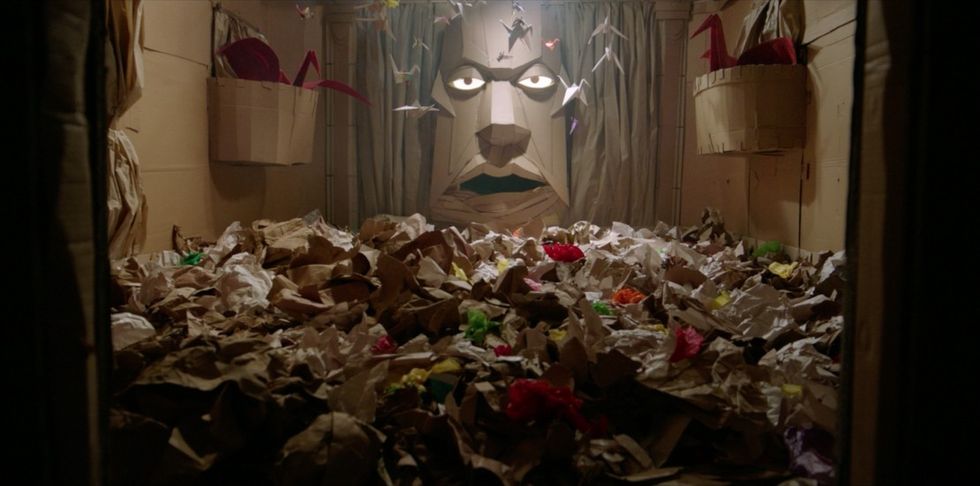
Winner of the Audience Award at Slamdance 2017, Dave Made a Maze is a hilarious look at what happens when you get over your fear of creating something, but then push that creativity just a bit too far and get lost in the process. The writing is sharp and witty, the subversion of genre is fantastic, and the set design is a DIY dream (or nightmare). Written by Bill Watterson and Steven Sears and directed by Watterson, this film feels like the perfect midnight movie to watch with a bunch of friends as Dave's friends go an adventure to save him from his own creation, despite his dire warnings to stay away.
7. The Big Sick — Finding your true love (when she's in a coma)
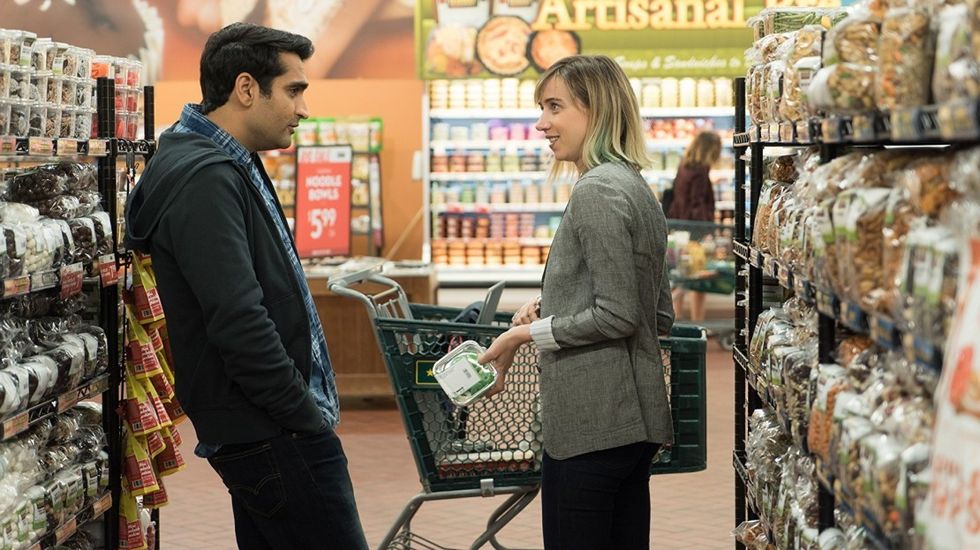
If you were to pitch a rom-com where, after the couple has its obligatory fight and breaks up, the guy tries to win the girl back only to discover she is in a coma, you'd probably be shown the door. If this were a true story, however, and instead of following the rom-com formula, the movie explored family dynamics, cross-cultural understanding, and true compassion, then you might have something.
Writers and married couple Emily V. Gordon and Kumail Nanjiani pull back the curtain on their unlikely courtship following their break-up and Emily's subsequent coma. The film finds comedy and heart as we watch Nanjiani balance the expectations of his Pakistani family, the initial hostility of Emily's parents, the arguments between Emily's parents, and his early stand-up career, all while worrying about what will happen to his ex-girlfriend when the doctors don't seem to have any answers. If it weren't based on a true story, you might never believe it. Because it is a true story, you'll find it hard to resist.
8. Blade Runner 2049 — Some mysteries will never be solved
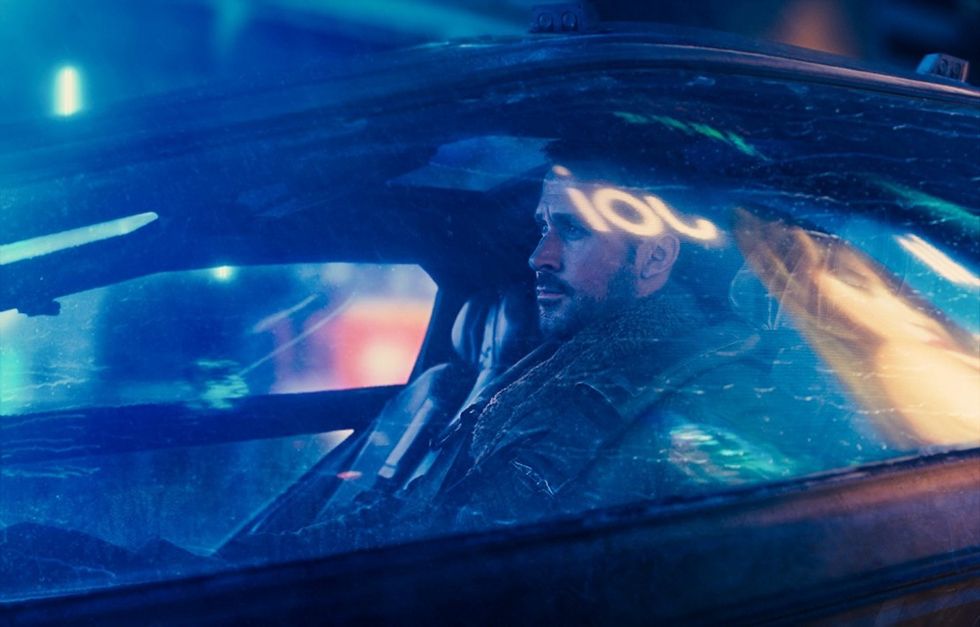
By definition, sequels really should not qualify as the most inventive screenplays. The original film set the stage, created the world, told the tale—how can a sequel truly be original? Blade Runner 2049 defies those expectations. One could argue this film should not even exist: a sequel to a cult sci-fi classic (that was never a box office success) that has gone through five official versions (not including two preview versions), and yet still leaves fans arguing about whether Deckard is a human or a replicant.
What makes Blade Runner 2049 remarkable (for those with the patience to get sucked into its world) is that Hampton Fancher and Michael Green's script answers some initial questions immediately, creates its own mysteries to be revealed later, and still never truly answers the question that has caused so much debate among its fans for over three decades. And yet, you will find many fans who believe this sequel has actually answered the question about Deckard once and for all. They just happen to disagree with how the other fans interpret the sequel's clues. So, the enigma continues.
9. Mudbound — Shifting perspectives to reveal the whole truth
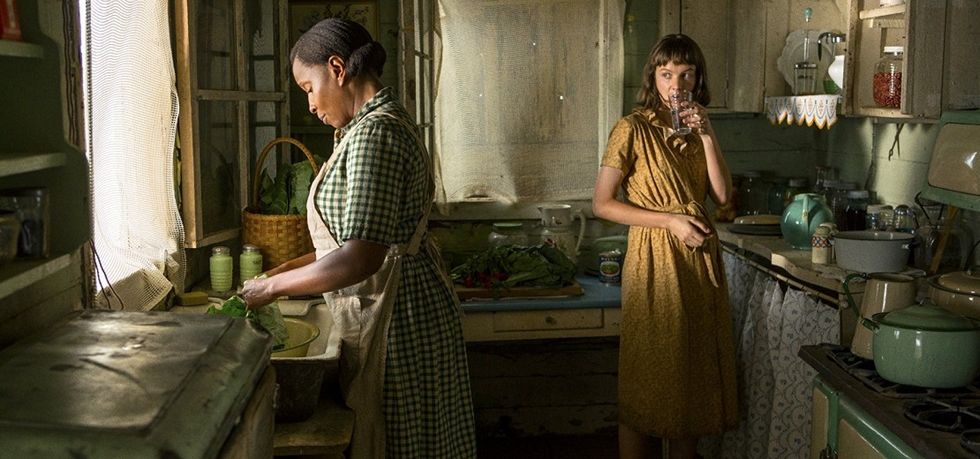
When we hear a character in voiceover, we naturally think the film is this character's story to tell. But the story of Mudbound needs to be told from a variety of perspectives to give the audience the complete picture. As such, not one, not two, but six characters—three black, three white—share their inner thoughts with us as Mudbound unfolds. The film borrows its storytelling structure from the novel by Hillary Jordan upon which it is based. The result is the creation of sympathy for each of these characters, at least when we first hear their voices take over the story. As the story continues, our sympathies shift dramatically as we watch the intertwined families of these landowners and sharecroppers reckon with one another on a farm in the Mississippi Delta during and after World War II, creating both unexpected joy and devastation.
Director Dee Rees, who shares screenplay credit with Virgil Williams, imbues those voiceovers with extra meaning as she underscores their words with beautiful, haunting images. My one regret while watching this film was that I couldn't see these images on the big screen because I don't live in New York or Los Angeles. Netflix may be championing independent filmmakers and innovative storytellers through the company's festival acquisitions and original productions, which I applaud, but the streaming service is also robbing many of us of seeing cinematic works as the filmmakers originally intended—in a theatre.
10. The Shape of Water — A fairy tale of romance, espionage and a sea creature
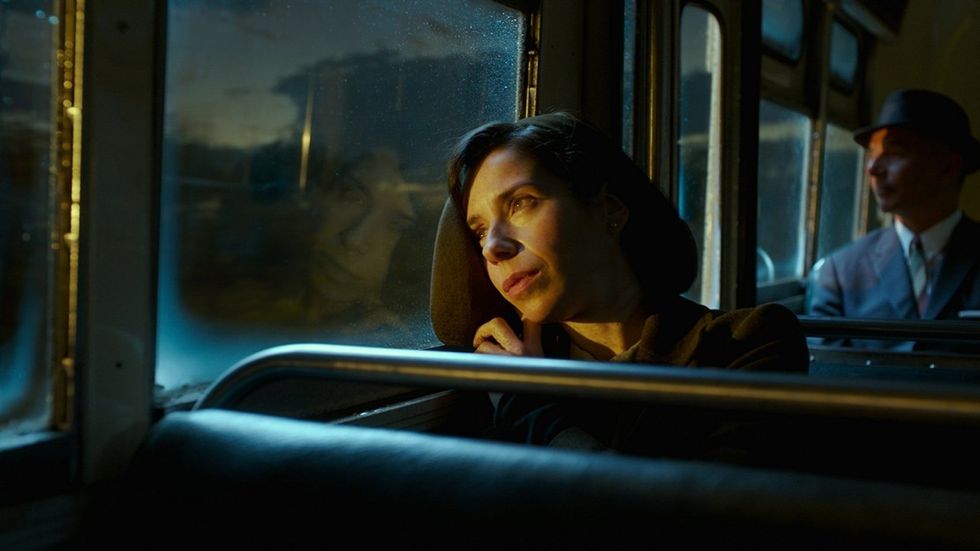
Guillermo del Toro is at his best in the land of fairy tales for adults. Over a decade ago, he pulled us down into Pan's Labyrinth, an immersive fantasy set against a dark reality, reminding us that the most memorable fairy tales don't have happy endings. In his latest fairy tale The Shape of Water, del Toro and his fellow screenwriter Vanessa Taylor balance the whimsical with the sinister, creating one of the most unlikely and romantic love stories in recent memory. The opening sequence alone is worth seeing on the big screen, visually setting the tone in a wonderfully detailed master shot.
Mixed into the plot of a mute custodian falling for a mysterious aquatic creature in a secretive government laboratory is even a love letter to cinema and the grand movie palaces of yesteryear. The Shape of Water flows effortlessly from drama to adventure to fantasy to romance, and reminds us that we go to the movies to get lost, to get swept away by a story, as long as we are willing to let go.











